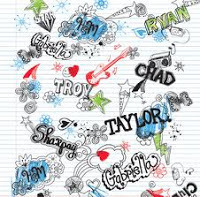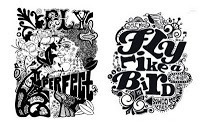Deborah Swift's Blog, page 48
September 4, 2011
Want to be a poet? Cath Nichols invites you in.
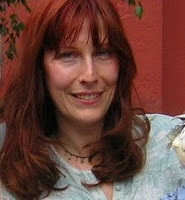 I have always loved poetry, both the writing and reading of it, as a way of enriching our dialogue with the world. Someone else who has found a rich source of pleasure in poetry is poet and lecturer Cath Nichols. I took the chance to ask Cath about her writing life, and was really inspired by her answers. If you live anywhere near Lancaster, don't miss her excellent workshops.
I have always loved poetry, both the writing and reading of it, as a way of enriching our dialogue with the world. Someone else who has found a rich source of pleasure in poetry is poet and lecturer Cath Nichols. I took the chance to ask Cath about her writing life, and was really inspired by her answers. If you live anywhere near Lancaster, don't miss her excellent workshops.What is it about poetry that makes it essential to you?
Cath: Something about the reading of poems makes me go into a different space/time experience – reading them in my head or hearing the poet read them out loud. It's not usually a 'story' space (escapism, learning or forward momentum) as I get from reading prose. It's more like meditation or a quality of attention. If prose is forward momentum, poetry is circular! It ripples out form centre. Certainly when I'm writing poetry, too, there is a sense of 'tardis space' – time spent 'in' poetry is bigger on the inside than it is on the outside!
2.Tell me about the themes that most excite you at the moment, or structures in poetry or prose that make your eyes light up.
I have been preoccupied with the sea for years and various myths. Also hybrid people and characters: mermaids and over the last couple of years the Procne and Philomela myth where both women are turned into birds. I've noticed that I often get hooked on material that was someone else's first. The hook is where my mind keeps going back to a thing that I disagree with strongly. It's the gritty irritation than later develops into something. Often a kind of injustice in the older writing that needs re-writing for today (in my opinion). Philomela (the nightingale in various odes) had real appeal: why should she sing a sweet sad song having been raped by her brother-in-law? It made me furious! So, I wrote a poem and later a play (set in the present and involving an Asian family in Manchester) to work out a different approach.
I am building up a novel now which is a response to Shakespeare's Cymbeline. Again deep outrage that Imogen's husband agrees to a bet to test his wife's faithfulness. She is put at great risk; he believes she has been unfaithful and sends someone to kill her; and then at the end of the story they reunite to live happily ever after! Aargh! The gall of it. Of course I realise in those days women had to put up with a great deal and possibly marriage was the best protection available, so you'd do all you could to make it work, and forgive all kinds of crap. But not now.
Structures: something about rhythm and alternation. It happens in my poems and dramatic writing. There's even a trace of that in the novel. In prose it seems to be to do with suspending the revelation of plot; and in a poem it's to do with tension and enjambment...
3. You are interested in radio and the aural experience of words. How has this influenced your work?
It was a big part of my PhD research. I'd noticed that many poets write for radio as dramatists, docu-drama writers and sometimes as poets. I love Michael Symons Roberts work (he used to be a BBC documentary producer and later Head of Religious Broadcasting before becoming a full-time poet and academic). Paul Farley and Simon Armitage too have done a lot. Way back you have Dylan Thomas and in fact almost every poet based in London in the forties. Samuel Beckett did some innovative stuff (the first really radiophonic work All that Fall – using sound in a distorted way for atmospheric effect). Joan Littlewood and Charles Parker valued working-class history and experience. With Ewan MacColl and Peggy Seeger they made the Radio Ballads series: this pretty much invented documentary without commentary – people were heard in their own voices for the first time instead of transcribed interviews being read by actors! That followed on from the invention of new technologies that made recording equipment portable – writers and producers could get out and about. Kathleen Jamie did a wonderful radio play in the 90s that had imagined characters from Larkin's Whitsun Weddings talking about their lives since the great Whitsun train ride. Their stories were interleaved with Larkin reading the poem. You can listen to it in the British Library if you go to the sound archive there. All of it is just so inspiring.
I've done some local radio short drama and poetry but I'm still trying to crack Radio 4 drama. New writers have to go via the Afternoon Play slot which is pretty pedestrian. Only the famous get asked to do docudrama stuff, which would be more up my street. So, watch this space!
4. Which other writers have made a lasting impression on you and why?
For novels, Shani Mootoo's The Cereus Blooms at Night. Fabulous, surprising novel set in the Caribbean with race, sexuality (as in queer as well as straight) and gender issues seamlessly woven through a great story set in the past and present.
Anne Carson, a Canadian poet and Classics professor who writes book-length poems or sequences. The Autobiography of Red (Red is a little 'creature' from a Greek myth alive in the present day), and Glass and Gods. The sequence where the narrator goes home to Mum after heartbreak but re-investigates Emily Bronte and the moors sums up a particular kind of sadness and detachment. It is sometime shocking when it describes certain acts of desperation, but it's so truthful as to how humans can be with each other. And she never loses her amazing touch of language and surprise even though there is a fair amount of 'story' going on. Carson also does translations of Greek drama and writes fantastic essays.
5. You teach poetry workshops, what has surprised you most about the process of passing on your
skills?
I really enjoy it. University students on Creative Writing courses are sometimes there because they want to write prose and might be a bit dismissive of poetry. So getting them engaged with an exercise and enjoying themselves feels terrific. In other non-uni settings students are more likely to be keen poets already. I think it becomes a dialogue. I'm interested in people's responses and the happy coincidences and surprises.. When you have a conversation you sometimes stumble on things you didn't know you knew – or they do! I think teaching makes you a better writer – so long as you can create the time to keep writing your own stuff.
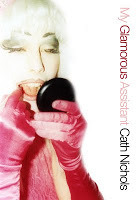
6. Tell me about your publications, and how we might join a workshop with you.
I'm teaching a six week course at litfest in Lancaster (near the train station)
on Monday evenings from the 26th September. http://www.litfest.org/litfest-workshops/
We'll be exploring how ideas about form can inform the way we create free verse poems. I felt that poets today often get stuck in one of two camps: the 'strict form only brigade' and the 'totally free verse crew'. I wanted to show how both sides have something to offer the other and that free verse (where many writers start) can become stronger from a few well chosen techniques. It's partly about re-drafting: making your initial poem much more 'poem-y'. Lots of exercises, some reading and happy discussions I hope.
Mondays 26th September - 31st October, 6.30pm-8.30pm.Cost: £60 (£50 concs.)
Book by 9th September by phone, 01524 62166, or by cheque (post to Get Writing, Litfest, The Storey, Lancaster LA1 1TH, with course name, ticket price and your full contact details)
September 2, 2011
The Water Theatre by Lindsay Clarke, Review
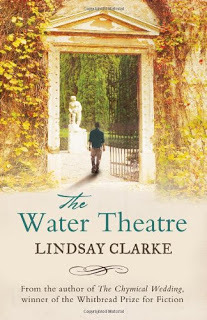
Totally absorbing, real literature.
The Water Theatre's hold on the reader is difficult to define, but I think it succeeds superbly as a work of fiction precisely because it operates on so many levels. As pure story, the characters are engaging and the plot (which I won't spoil) gripping. But this is also a serious work, with big ideas and depth.
On the one hand it is a story of one man's transition from naive teenager to man-of-the-world, and through that into some sort of acceptance and maturity. His family and the surrogate family he aspires to be part of, thinking them preferable to his own humble beginnings, both feel real, and are portrayed along with all their conflicting tensions - the complexities of class, politics and religious allegiances.
On the other hand, it is an exploration of how the imaginative faculty can bring us to a different more metaphorical experience of the world, and how old rituals can have transformative power. The fact that we might all be living out our own myth is hinted at by the archetypal names of the characters and by the structure of the plot.
It asks very real questions about the nature of evil and the best way to change an oppressive regime.The novel spans forty years and three continents, so this is a book with scope. It brings us back to asking about where a poetic vision and a spirituality might meet, and whether we can keep our innocence as we gain our experience.
If I could give this book more than five stars I would. Undoubtedly one of the highlights of my reading year.
August 31, 2011
Confessions of a historical fiction writer - Leftovers
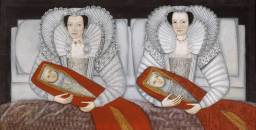
The question I get asked the most, and the thing people are most obsessed with when I talk to them about historical fiction is historical "accuracy".
Recently whilst working on my novel "The Gilded Lily" which is set in 1661, I was working with minor characters that were twins. In those times according to my research, people still were very suspicious of twins, viewing them as something unnatural, eerie and an enigma. The most common view of the time was that twins were sired by different fathers (if they were not identical) or that the mother had conceived twice by the same man (and was therefore a bit of a nymphomaniac) if they were identical. In the case of non-identical twins one of the babies was therefore often labelled "the bastard" and the woman ostracized as an adulteress.
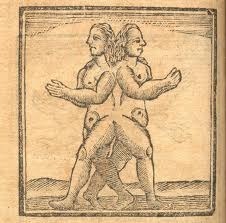 During the research I went off on many intriguing sidetracks, fascinated to discover the story of conjoined twins, who were even more suspect to the 17th century eye, and viewed as an aberration against God or monsters. The conjoined twins born at Isle Brewers, Somersetshire, in 1680, were among the earliest live-born English conjoined twins and people travelled from all over the country to see them. The twins died, probably in 1683, after being bought from their mother and exhibited for money by a certain Henry Walrond, an unpopular country squire who also by the way was a great persecutor of the quakers. A memorial plate in Lambeth Delft still exists that was made after their death to commemorate their popular appeal as a sideshow attraction and to mourn the passing of a unique "monster".
During the research I went off on many intriguing sidetracks, fascinated to discover the story of conjoined twins, who were even more suspect to the 17th century eye, and viewed as an aberration against God or monsters. The conjoined twins born at Isle Brewers, Somersetshire, in 1680, were among the earliest live-born English conjoined twins and people travelled from all over the country to see them. The twins died, probably in 1683, after being bought from their mother and exhibited for money by a certain Henry Walrond, an unpopular country squire who also by the way was a great persecutor of the quakers. A memorial plate in Lambeth Delft still exists that was made after their death to commemorate their popular appeal as a sideshow attraction and to mourn the passing of a unique "monster".All this was engrossing, so I duly included back-story scenes about the twins birth and wrote them into the plot. At the end of the first draft I realised that all the stuff about the twins was unbalancing the main thrust of the narrative and undermining the main characters, so reluctantly I cut most of it out, leaving a few sentences so as not to "waste" my research. After the second draft, leaving in the information about attitudes to twins raised questions in the reader, rather than being illuminating. So I cut it further. In the finished draft a mere veiled reference is made to my identical twins birth and back-story.
What a shame, I thought. There is such a good plot in there, but unfortunately not for "The Gilded Lily". My research on twins went the way of much of my research - cut to make way for a better story.
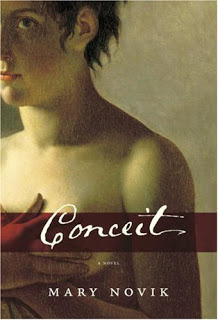 This often happens. The research cannot show too much in a novel or it turns into a history book, or readers get frustrated whilst you go down back-alleys of the plot. I recently read Mary Novik's brilliant book, Conceit, (set in a similar period to The Gilded Lily) about the daughter of the poet John Donne. At the back of the book she says,
This often happens. The research cannot show too much in a novel or it turns into a history book, or readers get frustrated whilst you go down back-alleys of the plot. I recently read Mary Novik's brilliant book, Conceit, (set in a similar period to The Gilded Lily) about the daughter of the poet John Donne. At the back of the book she says,"I have consulted all the usual scholars and biographers but, after all is said and done, this is my seventeenth century and I have invented joyfully and feely."
There can be thousands of individual views and reconstructions of an era, and all will contain accuracies, inaccuracies, omissions and inventions. That is the nature of fiction.
Whilst browsing online the other day though, I suddenly came across this - the cover drew my eye as it looked historical. When I clicked on it I found this blurb:
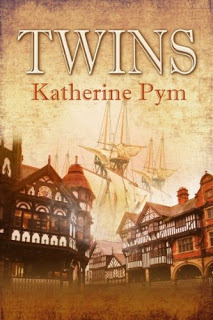
"London 1661. In this era the old belief that twins cannot be sired by one man still prevails, a superstition which automatically makes the mother of Edgar and Emma Torbet an adulteress. Desperate to protect her children from their violent father she flees, finally settling in London......
It made me laugh because all the time what I thought of as bits of my story had already been germinating and sprouting in someone else's imagination. It reminded me that we can never own history, and that what are the leftovers to me will make a very nice main meal for someone else. Good Luck with Twins, Katherine!
But what's the betting that when The Gilded Lily comes out, a reader somewhere will say, "she didn't get that right, about the twins. In the 17th century they...."
August 27, 2011
Story is King - Originality
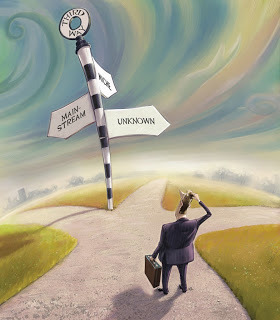
The net is full of writers who want to be the next best seller, whether or not they have been through the route of traditional publishing.
I was interested to read a review of one self-published novel which said it had many typos, errors of grammar and other textual flaws, but that this did not mar the reviewer's experience because the story was so good. The book has sold a lot of copies and is flying high in the e-book charts. I think the flaws might have irritated me more because to me spelling, grammar, and generally 'good' english is part of being a writer. I was brought up to think that way through my old-fashioned education.
But more and more I see that these "good english" skills have been replaced by machines that do the job of checking spelling, grammar, repetition, past participle searching and so forth. So in the current world of writing (at least as far as one reviewer is concerned) Story is King.
There are millions of stories out there all clamouring for an audience. If we are to believe Christopher Booker in The Seven Basic Plots, all of us are replaying ancient myths whether we know it or not, so originality is hard to achieve. What makes an idea original and how can one go about finding something original? And not just to one reader, but to many?
I'm sure it must be partly about voice. The readers must trust the storyteller. On this journey the initial premise of the story must transport them so that the readers lose their own reality and join with the writers vision, but at the same time feel that they are on this journey alone.
Often people say, "It caught my imagination" as if somehow the author has managed to trap it like a butterfly in a net. So, how to catch an imagination? The writer has to make the reader work hard so that they are engaged in creating the scenes in their head, but not so hard that they tire of it and put the book down. This is a hard tightrope to walk, the juxtaposition of the familiar to draw the reader in easily, and the unfamiliar to make it interesting.
Everyone thinks their story is unique, so I cannot claim to have done anything startlingly original, but thinking about this I realise that my best and most surprising ideas come from the following practices:
A lightness of touch. Trying to be original somehow provokes the very opposite.
A sustained attention on the minutiae of the character I am working with.
Researching real events. Truth is often more original than my mind seems to want to invent.
Giving the characters room not to reply to each other in words but to do something physical instead. Allowing them freedom of movement.
"Originality lives at the crossroads, at the point where world and self open to each other in transparence in the night rain."Jane Hirshfield
Image from: http://www.paintermagazine.co.uk/
August 15, 2011
Flipback books - Print fights back
http://www.youtube.com/watch?v=tXnfQS9cWgg
August 14, 2011
Hitting the Airwaves
 This morning I was scheduled to do an interview with Radio Cumbria, and never having done a radio interview before I thought I'd better supply myself with a crib-sheet of names, dates, and reminders. This is because my debut novel, The Lady's Slipper, is just out in paperback, but since writing it I have written and finished a sequel (to be published soon) and I'm nearly at the end of a third. So it is a long while since I was fully immersed in that book.
This morning I was scheduled to do an interview with Radio Cumbria, and never having done a radio interview before I thought I'd better supply myself with a crib-sheet of names, dates, and reminders. This is because my debut novel, The Lady's Slipper, is just out in paperback, but since writing it I have written and finished a sequel (to be published soon) and I'm nearly at the end of a third. So it is a long while since I was fully immersed in that book. Last week when I saw The Lady's Slipper on the book table right at the front of a Motorway service station I could hardly believe I had written it. It is actually great to have ceased to worry about it because I am so busy with another. I stood there, a little dumbfounded, looking at all the other wonderful books on the table with it, thinking, "Wow, did I write that?"
But back to the Radio Interview. Fortunately, on Radio nobody can see you, so I didn't have to stress about what to wear or what I looked like. I arrived early of course - I'm one of those people who is early for everything and would rather be 20 minutes early than 1 minute late. I had my reading glasses and hastily-scribbled crib sheets in hand, and was taken up to the studio which seems to be a tiny cupboard of a place in a vast concrete building.
The feeling beforehand was a little like going in for one of those language aural exams at school where you know they are going to ask you lots of questions, and you are terrified you might not understand the question, let alone know the answer.Several well meaning friends had warned me not to say "errm...."! (Sorry, folks)
The interview was conducted remotely - my interviewer was in Carlisle, and I was in Kendal, but I was met by the cheerful Suzie in Kendal who let me in, and wrestled with the technology which was playing up by flashing green lights when it shouldn't and refusing to connect us. Anyway, seeing my pile of notes she gave me this lovely advice before I went on air:
Don't worry. It's their job to make you look good and to keep the interview rolling. They will have researched you and supply you with questions which they know you will have interesting answers for. So relax. You won't need your pieces of paper.
The machinery was still refusing to function so we ended up doing the fifteen minute interview by telephone, but Suzie was right. Being on the phone actually made it easier, like chatting with a friend. Belinda asked interesting questions not just about the book but about other aspects of my writing life and I never once looked at the papers. And it was refreshing to chat about some different aspects, not just "what's the book about?"
I enjoyed it a lot and you can hear it the fifteen minute interview with Belinda Artingstoll on Listen Again here. Scroll almost to the end of her programme and you will find it, just after "Forever in Blue Jeans!"
August 9, 2011
17th century Aromatherapy
August 7, 2011
just published Debra Brown meets just published Teresa Bohannon
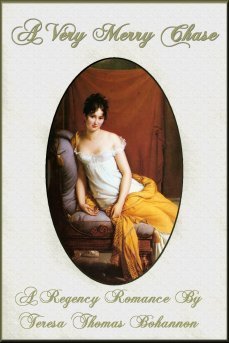 In these days when e-books and small publishers are making it possible for authors to find their own niche readers, many more books are available to suit many different readers.
In these days when e-books and small publishers are making it possible for authors to find their own niche readers, many more books are available to suit many different readers.Two successful authors who are reaping the benefit of this explosion in publishing are Debra Brown and Teresa Bohannon.
I am delighted to welcome Debra Brown whose book, "The Companion of Lady Holmeshire" was just released this month, interviewing Teresa Bohannon about her just-out Regency Romance, "A Very Merry Chase."
Debra Brown: Your first published novel is a Regency Romance novel, why did you choose this genre?
Teresa Bohannon: Actually, after a somewhat convoluted path, it chose me. Books are the love of my life. Even when I was tiny, I couldn't wait until I could read all by myself. Fortunately, I had a mother who didn't mind reading to me. I started out very early with fairytales, then myths, legends, reference books, encyclopedias, and history--always, even when very young, in search of great heroines and strong female characters.
About age ten or so, I discovered Edgar Rice Burroughs, who wrote some truly wonderful action/adventure style females that could darn well save themselves if Tarzan or John Carter didn't happen to be around to do so. Then came Tolkien and epic fantasy, followed by epic romances via the risque Angelique novels written in France in the 1950's. I loved the romance and the adventurous females in these books, but to be honest I scanned or skipped the sex scenes. Then one day I discovered Georgette Heyer and.... "Ta-Dah!" No more skimming required.
Debra: Do you remember the first Regency romance you ever read?
Teresa: That would be Georgette Heyer's 'The Grand Sophy' - strong, willful, witty, matter of factly in charge and most of all, for me, both financially and emotionally independent, i.e. everything I loved in a female character.
Debra: Which Regency romance authors have most influenced you in your love for the Regency period?
Teresa: Georgette Heyer, Dame Barbara Cartland, Jane Austen and actually just about every Regency that was written in the seventies and early eighties. I literally devoured every one that I could get my hands on, and especially Claudette Williams and all the authors of Coventry series. I remember they had lovely white covers graced with gorgeous paintings of couples in Regency dress.
Debra:Could you tell us a little about how you researched the Regency era for A Very Merry Chase?
Teresa:I originally wrote A Very Merry Chase 35 years ago, and believe me that was a whole different world from research and writing these days--especially in small town America. I remember filling several legal pads with every historical, social, and cultural detail I could glean from the Regency novels I was reading. Fortunately, there were a two public libraries and a decent sized University library near by that I could visit. Their early 19th century collections were abysmally small, of course. So I had the public librarians borrow several titles for me from libraries in large cities to read locally. I wasn't a student at the University at that point, so there wasn't anything they could do to help me, other than look the other way while I sat there for hours on end reading. One of the big problems I encountered, even at the public libraries, was the fact that most of the books I needed to read were considered reference books and could not be checked out, so I had to read them on site. I suppose looking back on it, that the librarians I actually spoke with were amused, here I was a scrawny little old country girl with just a high school diploma, dreaming of writing books about the early 19th century British Aristocracy; but as best I can recall they were all very kind and none of them laughed at me or told me I couldn't do it.
Debra:Are there any Regency era historical figures who particularly intrigue you?
Teresa: Although this was at a time when women authors such as Jane Austen, Fanny Burney, Mary Wollstonecraft, and Maria Edgeworth were starting to emerge, my favorite Regency figure is still probably Emma, Lady Hamilton. Her history is tragically sad, but fascinating, and epitomizes so much of women's history. She was literally a cultural icon and Supermodel of her day yet she died alone and in poverty, mainly because she was a woman and, in the end, powerless in a man's world.
My BA and MA are both in history, and although the university I attended didn't have a women's studies concentration per se, I personally concentrated on women's history in my research for each of my classes. To me, Emma Hamilton personifies the harsh way that the majority of women have been treated throughout history, and while this was particularly true when physical strength ruled the day allowing the males to build a power base for themselves and their heirs that generally excluded women, it really wasn't much better as time marched on and we supposedly became more civilized. Traditionally men have set the rules, and most women were punished harshly if they attempted to step outside their socially acceptable niche--particularly when their looks faded, and they were no longer perceived as desirable by the men who held the power. And that in a nutshell is pretty much what happened to Lady Hamilton.
Debra: What inspired you to write A Very Merry Chase?
Teresa: I wanted to be an author more than anything in the world. At the time I originally wrote AVMC, I was young and bright but also uneducated by the standards of the publishing world. I dreamed of writing and becoming financially independent, and I suppose, becoming the same sort of strong, self-reliant woman that I so admired in the books I read. The choice of Regencies was almost a given since they were the traditionally female genre that I most enjoyed reading at the time, and to this day, when I just want to sit back and relax and read for sheer entertainment, I love nothing better than a simple pleasures of a Regency Romance. However, let me state, for the record, that I would hate living in the real Regency era, even if I were incredibly, independently wealthy and could afford all the luxuries the period had to offer. The Regency Romance era that so many readers love, is as much a fantasy as anything ever written by Tolkien or H.G. Wells. In reality, the Regency, as was much of history, was dirty, smelly and uncomfortable, and it was a particularly harsh existence for women--even those in the upper classes whose sole responsibility was to provide an heir and a spare.
Debra: Tell us a little bit about A Very Merry Chase?
Teresa: A Very Merry Chase is a mostly light-hearted tale with just the tiniest taste of Napoleonic era intrigue. The heroine is the Right Honorable, Lady Sabrina St. Clair, who is wealthy, beautiful, and most independently minded, and who also happens to be on the verge of becoming--according to her less generous peers--an old-maid, or in the vernacular of the times, an ape-leader or antidote. Sabrina is anachronistic in that she does some things that no well-bred lady of the Regency era would ever dream of doing; but she's not particularly blatant about it. For Sabrina, the rebellion is more passive-aggressive in style, manifested, much the same those most women actually living in the Regency (or any other historical era).
The story opens with Sabrina's traveling coach being stopped by highwaymen as she journeys to London for the season. The hero of the story is Brenton, Lord Branderly, Duke of Brensted, an unusually tall gentleman, who, after spending most of his adult life wandering the world, has returned to England in search of a bride and heirs. They meet under rather unusual circumstances, clash repeatedly and eventually fall in love--she reluctantly, he determinedly--against a comfortably Regency backdrop of witty repartee, beaux, belles,dancing, mishaps, mayhem and misunderstandings.
Debra:What project are you working on next?
Teresa: I actually just released an illustrated version of Jane Austen's The Widow's Tale, otherwise known as Love and Freindship(sic), which I compiled from period sources. However, now that project is out of the way and A Very Merry Chase is finally published, I'm free to revise, finish and publish some of the other books I've written. My next release will be a paranormal romance that I started approximately 25 years ago. It actually began life as a series of short stories about a trio of reoccurring characters moving through time together. Over the years it has been written, rewritten, tweaked and edited more times than I care to count; but somehow I just couldn't make myself write that final chapter until last December--and I still don't have a title for it! And then after that I have a children's fairytale that I have an artist working on illustrating, a short story collection I need to edit and publish, a horror novel I need to fish, and about a dozen Regency Romance novels floating around in my head that I need to write.
Very many thanks to Teresa and Debra for this interview, you can purchase A Very Merry Chase here.
July 31, 2011
Two great entertaining books - 'The Mesmerist' and 'Darcy and Fitzwilliam'
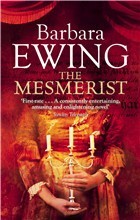 The Mesmerist by Barbara Ewing
The Mesmerist by Barbara EwingI borrowed this book from the library, knowing nothing about Barbara Ewing, but just liking the sound of the story. And I have discovered a great popular writer, who I see has just published another book, The Circus of Ghosts. Obviously lots of other people know how great she is, because it is currently sitting in the number one slot in Smith's. So yes, I have bought that one too.
The Mesmerist has been brilliantly researched and gives insights into the Victorian craze for mesmerism with its then scandalous and salacious overtones of being able to affect another person through the use of healing hands. This area of human capacity is still mysterious even today, and indeed is mysterious to Cordelia, the mesmerist of the title. Ewing does a great job of exploring the intricacies of how it might feel to mesmerize - or be mesmerized.
The book also has a great forward-moving rags to riches plot with many twists, which is based around the struggle of women for respectability in professional life, and how they might seize responsibility in a man's world. I can't say much more about it, or it will spoil the unfolding story.
The main characters are women who are seen at all stages of life, from very young to the dementia of old age, all of whom are interestingly drawn and leap vividly to life off the page. There is murder, a riveting court case, and all the fun of the theatre. Very highly recommended.
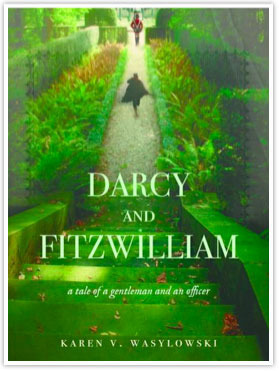 Darcy and Fitzwilliam by Karen Wasylowski
Darcy and Fitzwilliam by Karen WasylowskiI am not a particularly fanatical Austen fan, certainly not a purist, but I do like the wit of Jane Austen, and so was ready to embrace the tale of Darcy and his cousin with open arms. I was not disappointed. What impressed me most about this book was that it was the feel of Austen, but updated. It is very difficult to be funny in an Austen-esque way and still be fresh. Too often the humour doesn't properly succeed. But the impact that Austen must have had in her day is all here, in this laugh-out-loud romp through Darcy's post wedding adventures, and those of his irrepressible "brother".
I was unprepared for just how funny the book would be. The scene where Lizzie is giving birth, with Amanda's small, curious, stiffly-educated son looking on, is hilarious, and had my husband wondering why I was laughing so much. Even the servants have been wittily expanded, and the book is funny because it is so well-observed. It pokes fun at regency attitudes to women, and gently lampoons the mores and morals of the time. There is also a sense in which the English themselves are satirized, and this is refreshing, but not at all offensive.
After the initial forty or so pages of set-up the book fairly sweeps along with misunderstandings aplenty, and it is no slight volume. The characters have to be impeccably constructed for the situation comedy to work, and Karen Wasylowski has done this thoroughly, also the research on her period and The Peninsula War gives the reader just the right amount of setting.A great read, that works whether you have read any Austen or not.
July 22, 2011
Doodle Day
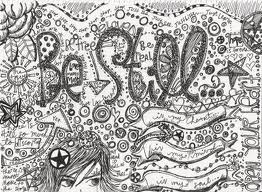 m the blog hop. How do you doodle!You can find out more about the blog hop here.
m the blog hop. How do you doodle!You can find out more about the blog hop here.
Thinking Time
As a writer I often feel I need some thinking time. It is tempting to launch in to the writing with a feeling that only physical writing is what matters. And we are told to write, write, write. But this can be a little unbalanced if it is not preceded by some thinking time. I don't even mean the "Let's work out the plot" thinking which feels like hard graft, but I mean the free-form flow of thought which is the writer's equivalent of doodling. The doodle on the left is from www.doodlerblog.com
I love to doodle down my ideas around my novel. These can be vague atmospheres, things I am interested in, images I'd like to include. Some of my thoughts seem random, but often I find that there is some sense in my nonsense. Did any of you make this sort of doodles around people's names when you were at school? (Go on, admit it!) I use this idea sometimes to work around a concept or character in my writing.
The more professional doodle on the right shows how you might like to use word and image together, it is from this blog. Do you doodle? Happy Doodling!
